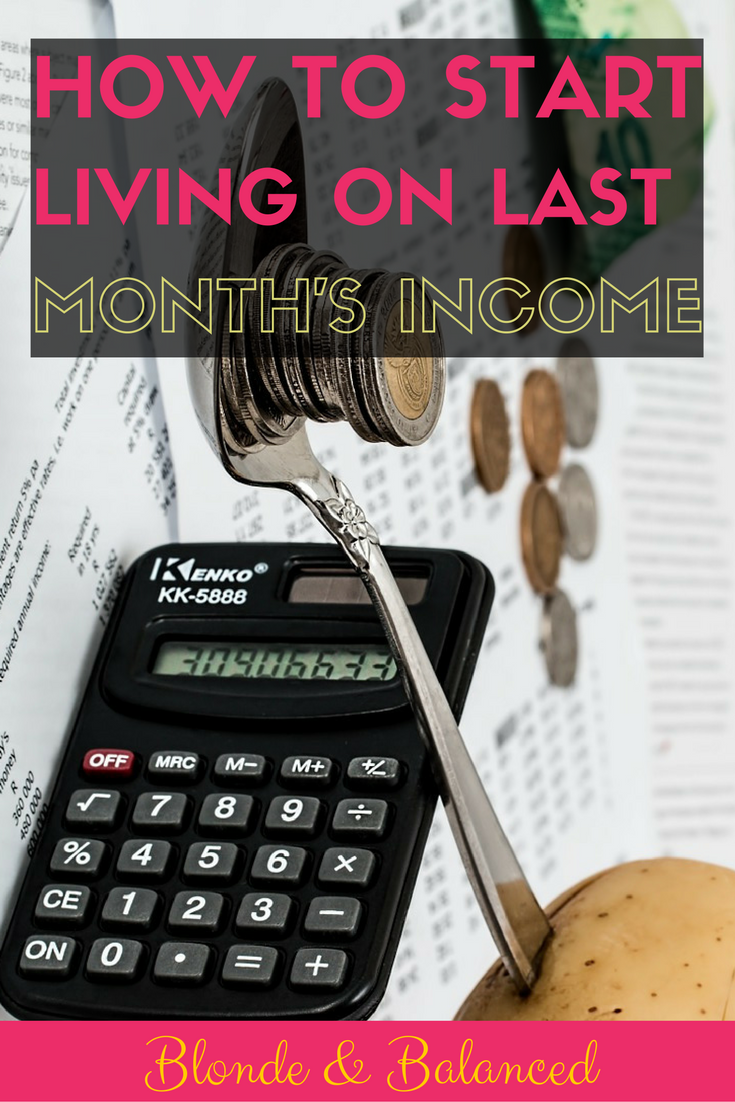Living on last month’s income is a topic I first learned about when discussing the budgeting software You Need a Budget (YNAB) with a friend. The creators of YNAB believe it is such an integral part of budgeting that it is listed as “Rule Four” in their budgeting rules. It can reduce the monthly struggle of timing bills to your paychecks (for example, the “I get paid on this day but my bill is due a few days earlier so I’ll probably be late paying this bill” game that many of us have played.) Plus, it makes the concept of budgeting much easier because you know exactly how much money you have to spend that month– which is key for my friends who get paid on an hourly basis or have a variable income. Essentially, it’s like having a “one month” emergency fund in your checking account, because should something happen and you miss receiving a paycheck or something, Although I don’t use the YNAB software myself, I think the idea is great and can be implemented using whatever budgeting system you prefer.
- Determine your monthly expenses. This would include any bills and any sinking funds (the financial term for saving for irregular expenses.) For example, I pay my car insurance semi-annually, so each month I save 1/6th of the semi-annual amount.
- Determine where you can make temporary cuts. In order to save an average month’s income, you will need to either a) reduce your expenses or b) increase your income. Since increasing your income isn’t always an option for everyone, I recommend cutting expenses. Remember, this is just temporary– typically only for a few months. Another option is to sell unused household items or use your tax return/employment bonus to build your “buffer” (the YNAB term for a month’s paycheck in your checking account.)
- Create a category in your budget called “buffer” and put your extra money into this category. Repeat until fully funded. One of my friends (who lives off last month’s income) said she would put the oddest amounts into her “buffer” category. Literally, every single penny that wasn’t allocated elsewhere in her budget went into this category. You will most likely have unexpected emergency expenses pop up, and that’s okay; use some of this buffer money to fund the emergency (so you won’t create more debt), and then get back on track to refund this category.
- Once you have a month’s income in your “buffer” category, move it to your “income for the month” section for next month. For example, if you save an entire month’s income in the month of November, when creating your December budget use the exact amount listed in your buffer. When your December paychecks hit your checking account, input those into your January budget spreadsheet for easier budgeting at the beginning of January.
The key to living off last month’s income: budgeting! Keeping an extra month’s income in your checking account takes discipline to not spend it all at once. Instead of looking at your checking account before you make a purchase, check your budget to see if you have enough money left to spend in that category.
To see peoples actual budgets as well as to get tips to start and stay on a budget check out these other articles.
Real People’s Budget Round-Up
6 Ways to Stay Positive When You’re On a Tight Budget
How to Determine Budget Needs from Wants







